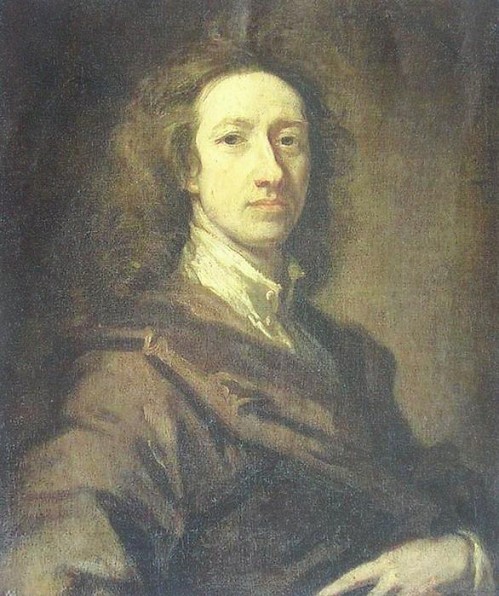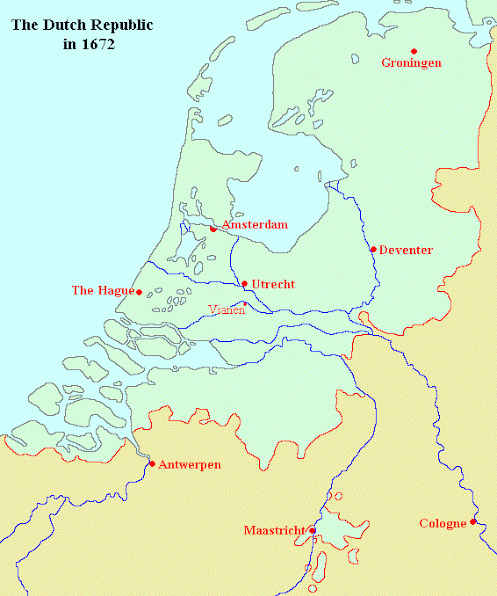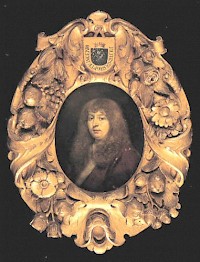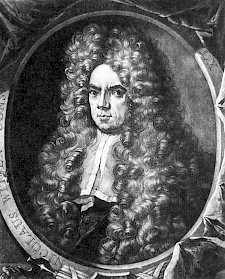Bruijn (7)
Cornelis de Bruijn (c.1652-1727) was a Dutch artist and traveler. He is best known for his drawings of the ruins of Persepolis, the first reliable pictures of these palaces to be accessible for western scholars. His other visits included the Ottoman Empire, Egypt, Jerusalem, Russia, and the East Indies.
Home again

When Cornelis de Bruin returned home, he was about forty years old. Almost half of his life, he had spent abroad, and he had seen more of the world than his contemporaries and compatriots. We don't know how he experienced his return. What is certain, is that he was a well-respected man. In 1694, he became a member of the Accademie van de Teyken-Const (Academy of Painting, the current Dutch Royal Academy of Art), which had recently been founded by his former teacher Theodorus van der Schuer and several others, including a Robert Duval who had been among De Bruijn's fellow-Bentveughels.note This new academy was founded as a secession of a similar organization, called Pictura, and offered the possibility to draw nudes. Many artists, including De Bruijn, were member of both institutes.

His main project in these years was the preparation and edition of his first book, Reizen van Cornelis de Bruyn door de vermaardste Deelen van Klein Asia (Travels in the Principal Parts of Asia Minor). In the introduction, he wrote:
I want to offer accurate pictures, of those cities, towns, and buildings that I have visited, and without recklessness I can claim to have done something that no one has done before.
This was indeed the case, and the result was splendid. The book had about 400 pages and included no less than 200 pictures of all kinds of monuments, ancient and modern. A publication of this size and scope would have been a big investment even for a rich man, which De Bruijn certainly was not. In fact, we do not fully understand how he was able to finance it. It was one of the first "subscribed editions" in Holland, which means that people received a discount if they paid in advance, and indeed, the book has a list of no less than 630 people who had subscribed to the book beforehand, but this does not explain everything.
De Bruijn also received a rare privilege: copyright. He was the only one who had the right to publish this book, and the Dutch government promised that it would fine those who violated this privilege. This was most unusual and suggests that De Bruijn had extremely influential friends. The list of people who subscribed to the book helps us identify these people: courtiers and friends of His Britannic Majesty William, king of England, prince of Orange, stadholdernote of Holland. How close De Bruijn's connection to one of the most powerful men in the world actually was, is shown by the fact that he had his portrait painted by Sir Godfrey Kneller (1646-1723), the British court painter.
How a comparatively unknown painter could have such excellent contacts, is still a mystery. Perhaps the answer is sleeping somewhere in a British archive. For the time we may perhaps think about De Bruijn's remarkable finances, his excellent connections in Smyrna, and the fact that the Dutch ambassador in Constantinople suspected him of a crime but refused to act. It is a tempting idea that William of Orange had sent De Bruijn on a secret mission. But probably, we must resist this temptation.

Before the book was published, Cornelis de Bruijn met Gisbert Cuper (1644-1716), the mayor of a city called Deventer, a devoted adherent of William of Orange, and -above all- a famous classicist and antiquarian. How Cuper knew about De Bruijn is not known, but the Dutch consul in Smyrna, who had received the painter so kindly, exchanged letters with Cuper and may well have informed the scholar about the painter. An alternative explanation is that Cuper often visited The Hague (he was a member of the Estates General) and may have heard about De Bruijn in his hometown.
However this may be, the two men met and De Bruijn was allowed to make a copy of a large painting from Cuper's collection: the ruins of Palmyra, painted by the G. Hofstede van Essen who had been able to visit the recently discovered desert city in 1691. Consequently, De Bruijn could include Palmyra in his book.
Travels in the Principal Parts of Asia Minor appeared in 1698 and was a spectacular success. A French translation of the Dutch original appeared in 1700, and an English one in 1702. The reviews in the Bibliotheca librorum novorum and the Journal des Sçavans, two of the world's first scholarly journals, were enthusiastic. And finally, the French edition contained a technical novelty: De Bruijn ordered two copies to be printed in color. Until then, illustrations had been colored by hand, but printing in color had never been done before. Again, one wonders how De Bruijn got the money.

His star was rising. In 1699, he was one of the regents of the painting academy in The Hague. In 1700, he visited London, where Godfrey Kneller painted his portrait, and where he may have met other important courtiers. And in Holland, he met Nicolaes Witsen (1641-1717), mayor of Amsterdam and a well-known cartographer with an extensive network of important contacts in Asia. Witsen suggested De Bruijn to make another voyage, this time to Russia and Persia.
This trip was really meant as scholarly research. De Bruijn's main objective was to visit Isfahan and Persepolis, the capitals of modern Persia and the ancient Achaemenid Empire. He received letters of recommendation, learned to use several scientific instruments, and asked scholars and scientists what he had to pay attention to.
Another objective was to visit Russia, the country of czar Peter the Great (ruled 1682-1725), an acquaintance of Nicolaes Witsen. The czar wanted to modernize his empire and build a merchant fleet, and the Amsterdam mayor, who had already met Peter's father in 1664, had arranged an incognito apprenticeship for the young czar at the Amsterdam wharves and in the Zaandam windmills in 1697. After this remarkable visit, Peter did indeed launch a modernization campaign, and Witsen guessed that the monarch needed an artist to show the people in the West what the modernized Russia looked like. In this way, the backwards image of Russia might be corrected, and foreign investors might be interested in the large empire. De Bruijn was to be this artist. Having made his will, he left The Hague on 28 July 1701.